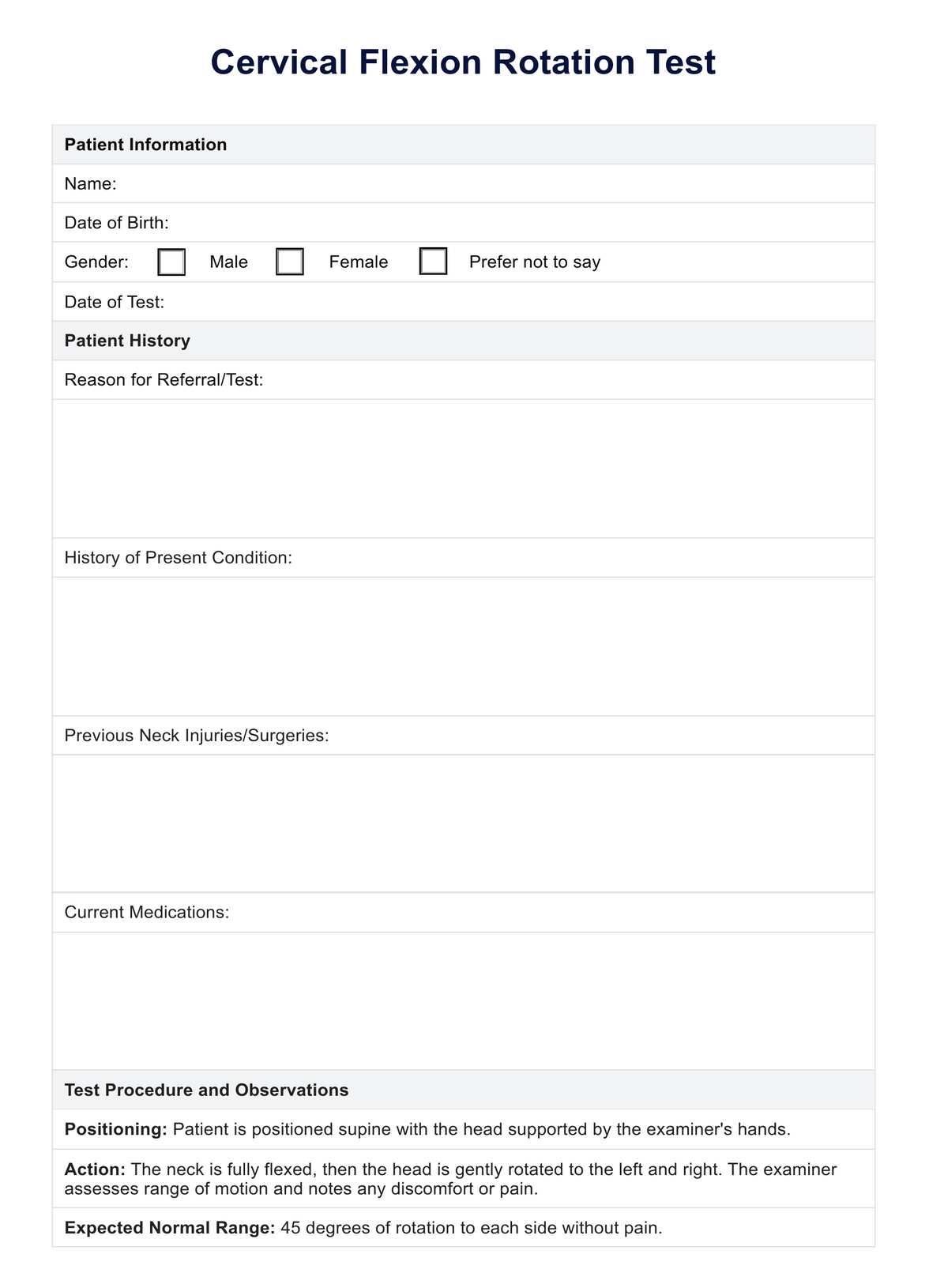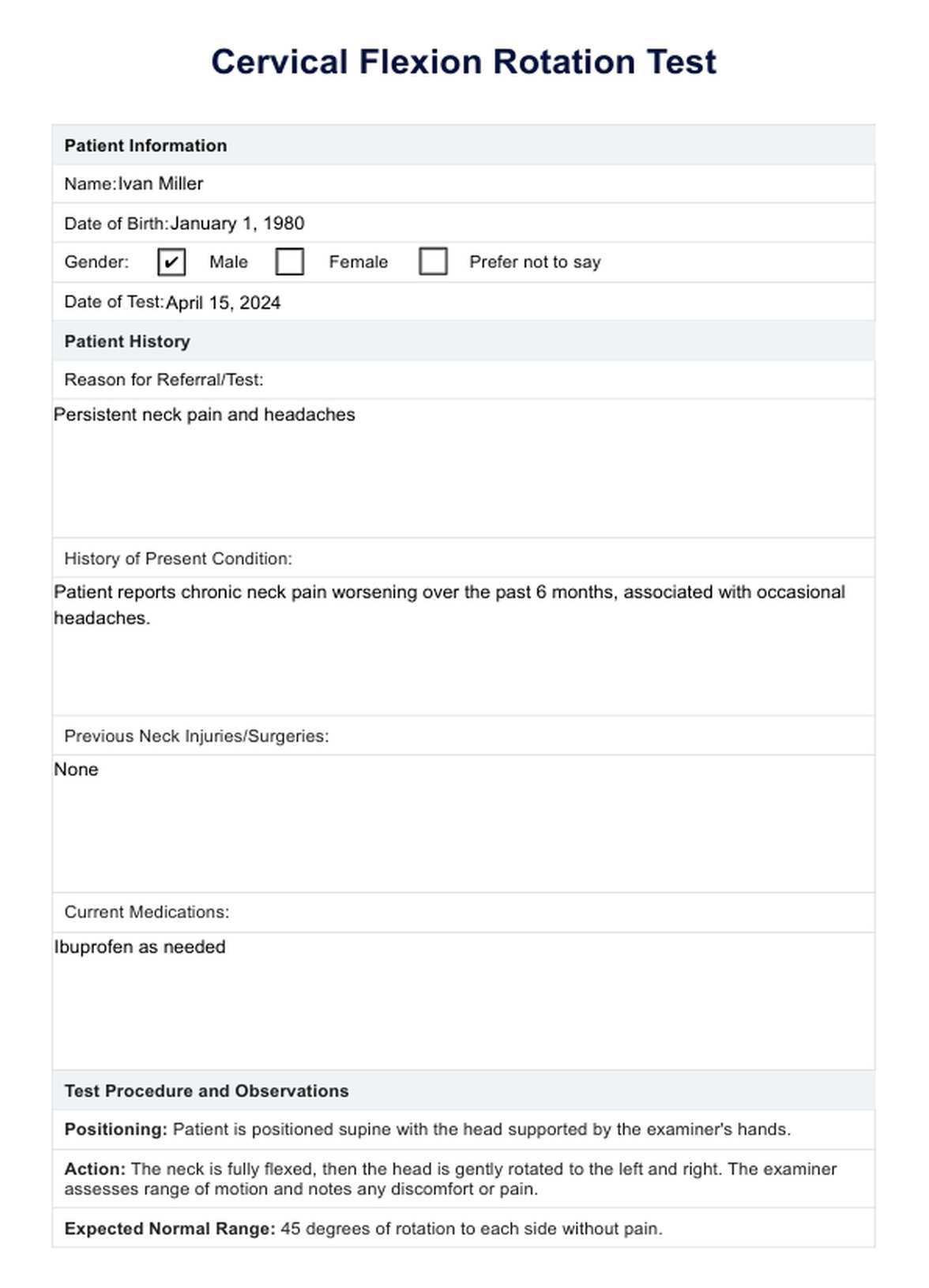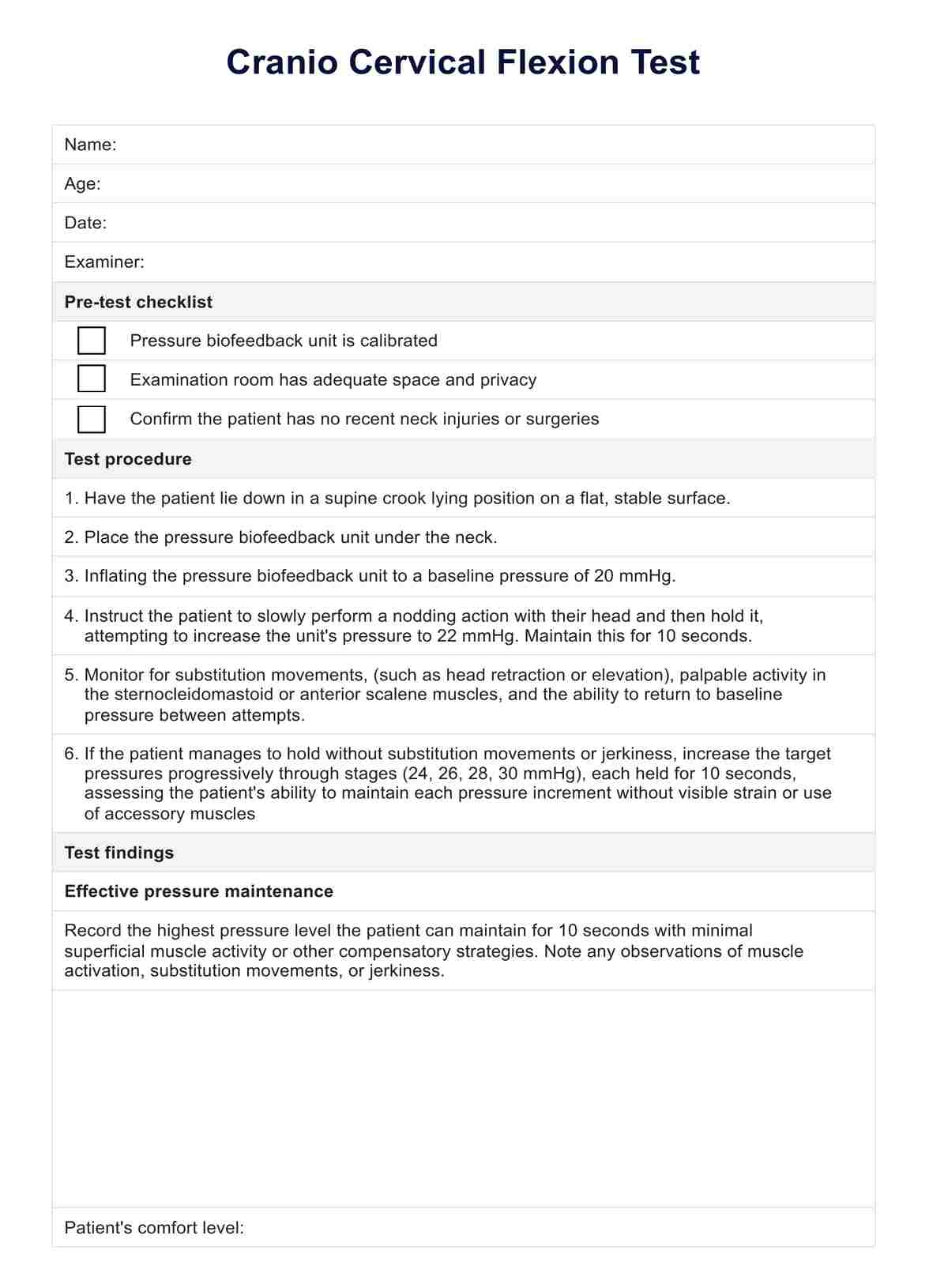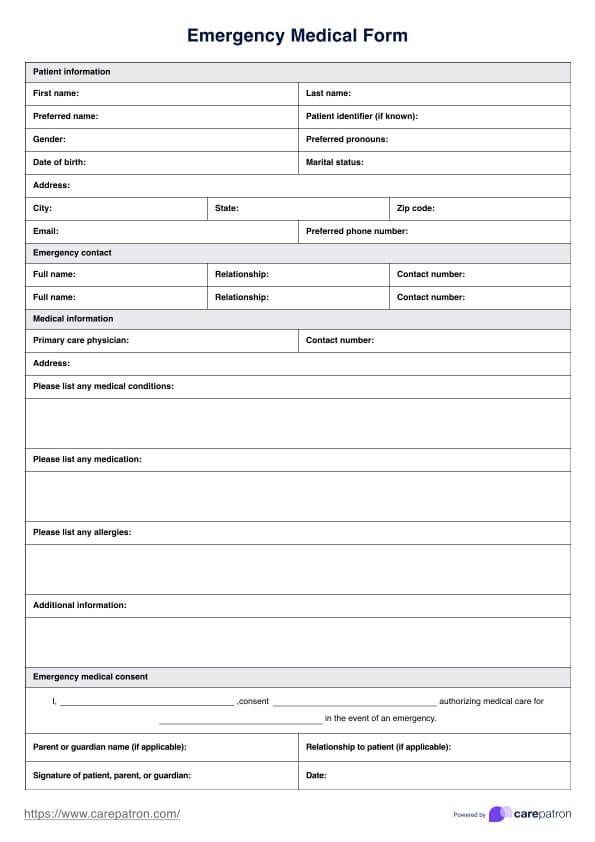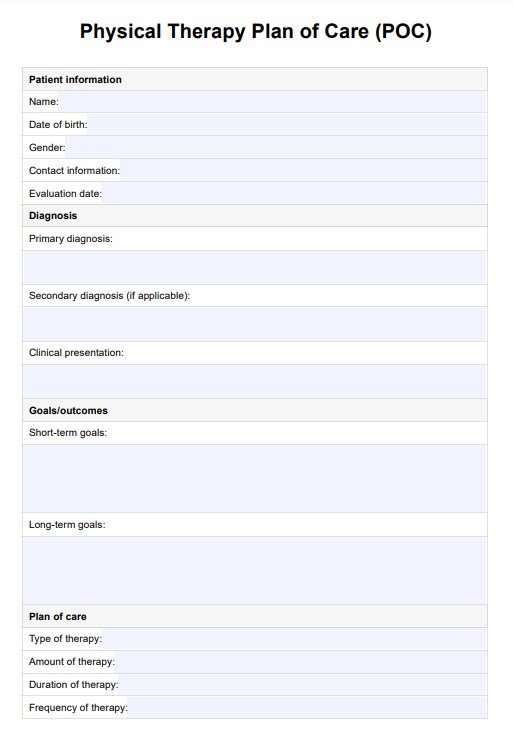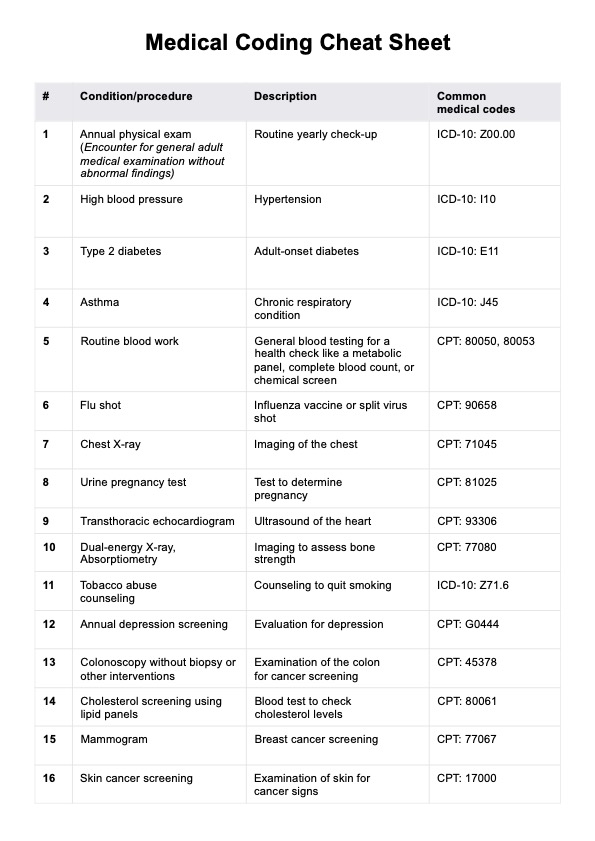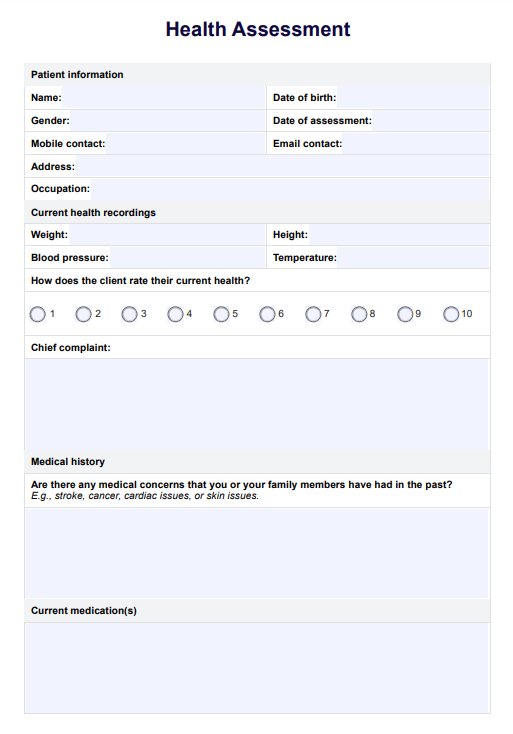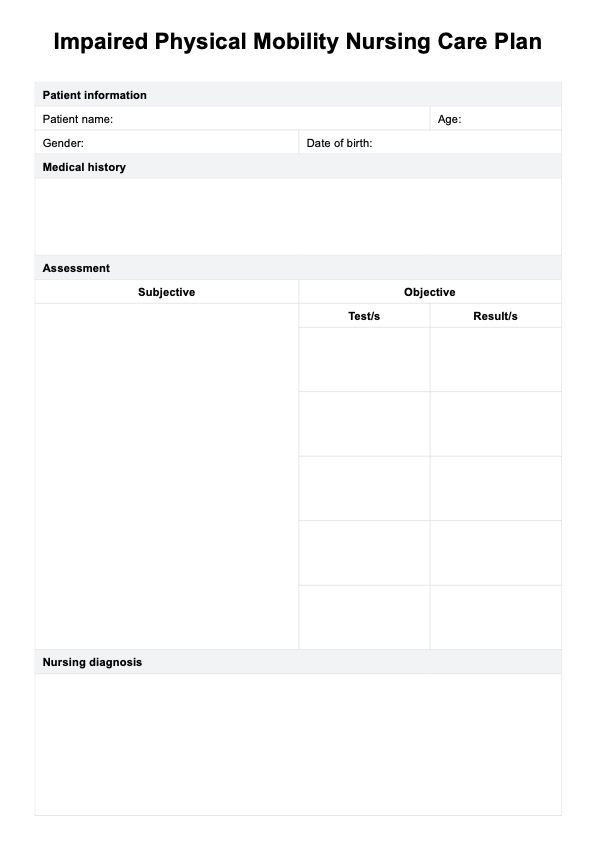Cervical Flexion Rotation Test
Discover the Cervical Flexion Rotation Test for assessing upper cervical spine dysfunction, ideal for diagnosing cervicogenic headaches and neck issues.


What is the Cervical Flexion Rotation Test?
The Cervical Flexion Rotation Test is a diagnostic physical examination used to assess the range of motion and mechanical dysfunction in the upper cervical spine, particularly at the C1-C2 vertebrae levels. During the test, the patient lies on their back while the examiner fully flexes the neck and then rotates the head to the left and right.
Purpose
These cervical flexion-rotation test primarily identifies limitations or asymmetries in cervical rotation, often indicative of cervicogenic headaches or other cervical spine pathologies. Specifically, it aims to identify restrictions in upper cervical rotation, that may contribute to cervicogenic headaches or other neck-related issues.
By isolating the movement of the upper cervical spine, it allows clinicians to diagnose the source of neck pain and headaches more accurately. This test is valuable for formulating targeted treatment strategies to address the identified dysfunctions and improve patient outcomes.
Cervical Flexion Rotation Test Template
Cervical Flexion Rotation Test Example
How to conduct the test?
Conducting the Cervical Flexion Rotation Test accurately is crucial for identifying dysfunctions in the upper cervical spine that may contribute to conditions like cervicogenic headaches. This process involves a series of steps aimed at isolating and assessing the rotational mobility of the neck, ensuring precise diagnosis and treatment planning.
Step1: Positioning the patient
The examination starts with the patient lying supine on the table, positioned to ensure relaxation of the neck muscles. Proper positioning is essential for a clear assessment of the cervical spine's natural mobility and to avoid compensatory movements that might skew the results.
Step 2: Flexing the neck
Next, the patient's neck is gently flexed forward to its maximum comfortable range, focusing the assessment on the upper cervical spine. Achieving upper cervical range and full neck flexion is crucial as it limits the involvement of lower cervical segments, spotlighting the rotational mobility of the upper spine.
Step 3: Rotating the head
With the neck fully flexed, the head is then rotated to both sides to measure the cervical range of motion and detect any discomfort or restrictions, highlighting potential dysfunctions at the C1-C2 level.
Step 4: Observing and recording results
Throughout the procedure, any signs of discomfort headache pain, limitation in movement, or asymmetry in rotation are carefully observed and recorded. These findings are vital for diagnosing cervical spine issues and tailoring appropriate treatment strategies.
Results and interpretations
The cervical flexion-rotation test yields results that are pivotal in assessing the functional integrity of the upper cervical spine, specifically around the C1-C2 vertebrae. A typical healthy outcome allows for approximately 45 degrees of rotation in both directions without pain or resistance. However, any deviation from this norm indicates potential dysfunction or restriction in the movement impairment of the upper cervical regions.
These findings necessitate a careful comparison with the patient's reported symptoms and possibly other diagnostic evaluations to pinpoint the exact nature and source of the issue. Interpreting the results accurately is also fundamental to crafting an effective treatment strategy. Limitations in rotation or pain signals during the test can suggest various conditions, including cervicogenic headaches, which stem from cervical spine problems.
Understanding these outcomes in the context of the patient's overall health and symptoms is essential. It guides healthcare professionals in diagnosing the underlying causes of neck pain or headaches, thus enabling a more focused and efficient approach to treatment.
Next steps
After interpreting the Cervical Flexion Rotation Test results, a structured approach is crucial to address any identified issues effectively. The following steps outline a comprehensive pathway from diagnosis to treatment and long-term management.
Step 1: Develop a personalized treatment plan
Based on the test results, if restrictions or dysfunctions are identified, the first step involves creating a tailored treatment plan to address these specific issues.
Step 2: Implement physical therapy techniques
Incorporate physical therapy interventions, such as manual therapy and exercises, designed to enhance cervical mobility and strength, alongside pain management strategies. These treatments aim to alleviate symptoms, improve functional mobility, and reduce the risk of future complications associated with cervical spine dysfunction.
Step 3: Consider further diagnostic procedures
If the diagnostic test reveals severe limitations or the initial treatment does not lead to expected improvements, proceed with additional diagnostic methods. This may include advanced imaging techniques for a more detailed assessment of the cervical spine's condition or consultations with specialists for an in-depth evaluation.
Step 4: Regular monitoring and adjustments
Continuously monitor the patient's progress and make necessary adjustments to the treatment plan based on their feedback and the evolving nature of their condition. This ensures the interventions remain effective and responsive to the patient's needs.
Step 5: Address the root cause
The ultimate goal is to provide immediate relief from symptoms while addressing the underlying cause of the problem. Through comprehensive care and targeted treatment, the aim is to ensure the patient's long-term health and comfort.
When to conduct the test?
The Cervical Flexion Rotation Test is particularly useful in scenarios where there is a suspicion of upper cervical spine dysfunction, manifesting as a cervicogenic headache, headaches, neck stiffness, or restricted neck mobility. This test becomes a critical component of the diagnostic process when patients report symptoms that suggest the involvement of the C1-C2 vertebrae.
Conducting this test is also recommended as part of a comprehensive neck assessment when there are indications of asymmetry in the lower cervical spine dysfunction or rotation or when diagnosing conditions that could involve the upper cervical spine. It provides valuable information about the range of motion and identifies potential restrictions that might not be apparent through a general physical examination.
Commonly asked questions
To check cervical rotation, a practitioner typically has the patient sit or lie down, stabilize their torso to prevent shoulder movement, and then measure how much cervical rotation ROM or how far the patient can turn their head to each side.
The Cervical Flexion Rotation Test is considered reliable for identifying cervicogenic headaches, with high intertester reliability and good specificity reported in clinical studies.
It is very reliable. According to Hall et al. in 2010, the FRT has an inter-rater reliability of 0.95-0.97 and a minimal detectable change of seven degrees. Ogince et al. reported in 2007 that it has a sensitivity of 91% and a specificity of 90% in diagnosing cervicogenic headaches.


